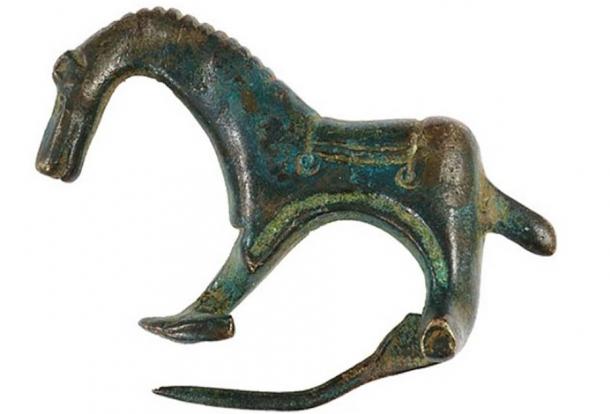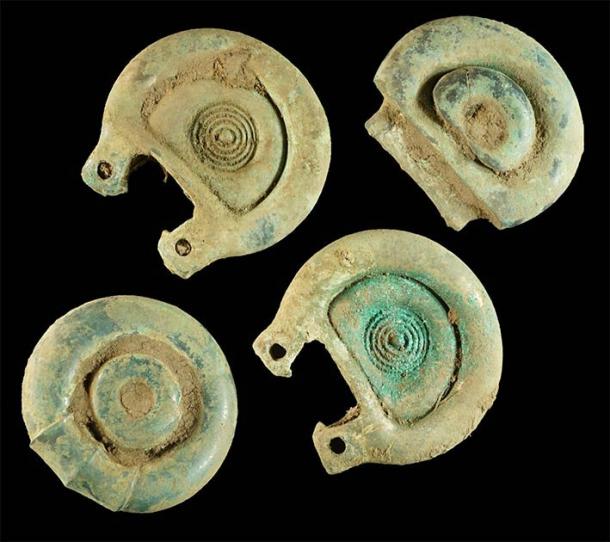The British government is going to update its UK treasure laws in the face of increasing discoveries made by metal detectorists. The UK government has announced plans to update the official definition of “treasure” in response to the surging number of recent finds by metal detectorists. Currently, under the 1996 AD Treasure Act , for discovered artifacts to qualify as “treasure,” they must be at least 300 years old and made of gold or silver. But this is all about to change as the law for UK treasure adapts to “modern” times and also supports the public value of artifacts that are not made of precious metals.
Currently, when a metal detectorist makes a discovery in the UK that is officially identified as “treasure,” the items become the property of the Crown and they are sold to local and national museums for public display. The new UK treasure law aims to protect items deemed as being “cultural treasures,” which presently do not qualify under the 1996 AD definition of “treasure.” And according to an article in The Guardian the new laws mean artifacts can be “saved for the nation, rather than sold to private collectors.”

As more and more metal detectorists scour the UK countryside for treasure, the UK treasure law changes were something that just needed to be done to prevent “theft” and treasures leaving the country. ( sumire8 / Adobe Stock)
The Current 1996 AD UK Treasure Law Is Not Sustainable
In the minds of the general public the word “ treasure” suggests images of pirates, bank jobs and heaps of precious metals, gems, and other valuable objects. But this way of looking at treasure fails to include, for example, Bronze Age swords , which are not made from precious metals but are without question “cultural treasures,” nevertheless. Granted, it’s not every day that metal detectorists dig up rare weapons, like swords, but they do often recover Bronze Age jewelry and decorative artifacts.
Perhaps the best, and most recent example of how the current laws stifle all reason, was the 2020 AD discovery of the Leasingham horse in Lincolnshire, dating from between the 2nd and 4th century AD. There is no argument that this enameled bronze horse brooch is a true “national treasure,” yet it legally couldn’t be defined as such.

The famous Roman brooch found in Leasingham, England in 2020 AD by a metal detectorist. ( The Collection Museum in Lincolnshire ).
Fortunately, in this case, the discoverer was kind, and he didn’t sell it to a foreign collector but gave it to The Collection Museum in Lincoln. However, he could have legally sold it to the highest private bidder anywhere in the world.
Redefining And Streamlining UK Treasure Hunting
The UK Minister of Culture, Caroline Dinenage, said that while increasing numbers of detectorists are digging up ancient artifacts it is important “that we pursue plans to protect more of our precious history and make it easier for everyone to follow the treasure process.” And Dinenage assured the public that this is not some kind of radical governmental measure and that authorities will be consulting with metal detectorists , landowners, museums and members of the public.
In May 2020 AD, the UK government last updated its guidelines on metal detecting in England which states detectorists must obtain permission from landowners and that they should contact local council or district councils to check the local policies regarding detecting on public land.
Now the laws will be changed regarding the actual finds, both to include more artifacts made from non-precious metals and to streamline the current treasure reporting process. Where this will affect reporters, like me, is how we eventually describe ancient discoveries.

Key items from the Bronze Age treasure find in Scotland, thought to be pieces of a Bronze Age horse harness, found by amateur metal detectorist, Mariusz Stepien, in June 2020. ( Treasure Trove Scotland )
What I mean by this is: in August 2020 AD The BBC reported on metal detectorist Mariusz Stepien who was “left shaking with happiness” after discovering a hoard of Bronze Age artifacts, including decorated straps, buckles, rings, ornaments and chariot wheel axle caps, and a sword, buried in the Scottish Borders council area.
Emily Freeman, head of the Crown Office’s Treasure Trove Unit, told The BBC that this was “a “nationally-significant find,” dating to about 2,000 BC, representing the first such ancient hoard of its type to be found in Scotland and only the third in the UK. She said so few “Bronze Age hoards” have been excavated in Scotland.
However, the next time this happens, Freeman, and me, and all archaeology writers, will call such discoveries “Bronze Age treasure hoards” as they rightfully should be.
Top image: Searching for treasure using a metal detector and shovel will not be so easy anymore as the UK treasure laws change. Source: trek6500 / Adobe Stock
By Ashley Cowie
Related posts:
Views: 0
 RSS Feed
RSS Feed

















 December 5th, 2020
December 5th, 2020  Awake Goy
Awake Goy  Posted in
Posted in  Tags:
Tags: 
















